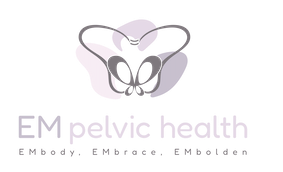People suffer from different types of headaches. These include migraines, sinus headaches, hormone headaches, and post-traumatic headaches. But did you know that stress-related headaches (often referred to as tension headaches) are considered one of the most common types of headaches that people have? (source) Fortunately, if you suffer from stress-related headaches, physical therapy may be able to help.
When you’re dealing with headaches, physical therapy may not be the first thing you think of when considering treatment options. Most people use over-the-counter medications such as ibuprofen (Advil, Motrin IB, others), acetaminophen (Tylenol, others) and aspirin to relieve headache symptoms, but it’s common knowledge that long term medication use can wreak havoc on other areas of our bodies (like our guts). Physical therapy, however, may be the ideal treatment if you’re experiencing stress or tension headaches.

How Can Physical Therapy Help with Stress Headaches?
Physical therapy modalities can help to promote muscle relaxation, while posture enhancing exercises can relieve pain and discomfort associated with headaches in the long term. Not only can physical therapy provide relief from your current headache pain, but it may also help decrease the number of stress headaches you experience in the future.
There are several ways that physical therapy can help reduce and/or prevent stress-related headaches, including:
-
Soft Tissue and Joint Mobilization: This is a form of manual physical therapy where your licensed PT uses hands-on techniques on your muscles, ligaments, fascia and joints in order to increase joint mobility, relieve tension, improve circulation and optimize your muscle function. (source) A physical therapist using the correct manual techniques can help alleviate contractions in the shoulders, neck, and head that can cause headaches.
-
Dry Needling: This is a modality that can be incredibly effective for tension headaches. Most of the population today finds themselves with their heads forward and their shoulders rounded, creating both hyperactivity and hypersensitivity of the neck and shoulder musculature (think about those knots you feel at the top of your shoulders). Dry needling has been shown in the research to not only release trigger points, but to also help reduce pain by sending messages to the brain that stimulate a healing response while also stimulating natural opioid producers within the skin, muscle, and connective tissue to reduce your pain sensitivity.
-
Stretching Exercises: Stretching exercises can also help loosen tight muscles and ligaments in your neck and back that may be contributing to your headaches. Certain stretches may also strengthen muscles in your neck and back. This can help reduce pressure in your neck and shoulders as the muscles become stronger and more flexible.
-
Lifestyle Modification: A physical therapist can teach you the proper ways to sit, stand, and even perform other daily activities, and over time, your improved posture may be able to decrease the amount of headaches you experience.
Still have questions? Would you like to schedule an appointment?
If you have a question and would like to speak with a physical therapist, don’t hesitate to contact me. You can contact me via phone at (305)-982-7595, via email at arienne@doctorarienne.com, or simply fill out an online form. If you suffer from chronic stress-related headaches and would like to explore physical therapy as a treatment option, schedule an appointment.
If you enjoyed this blog article or have a specific question about it, shoot me a comment below!
